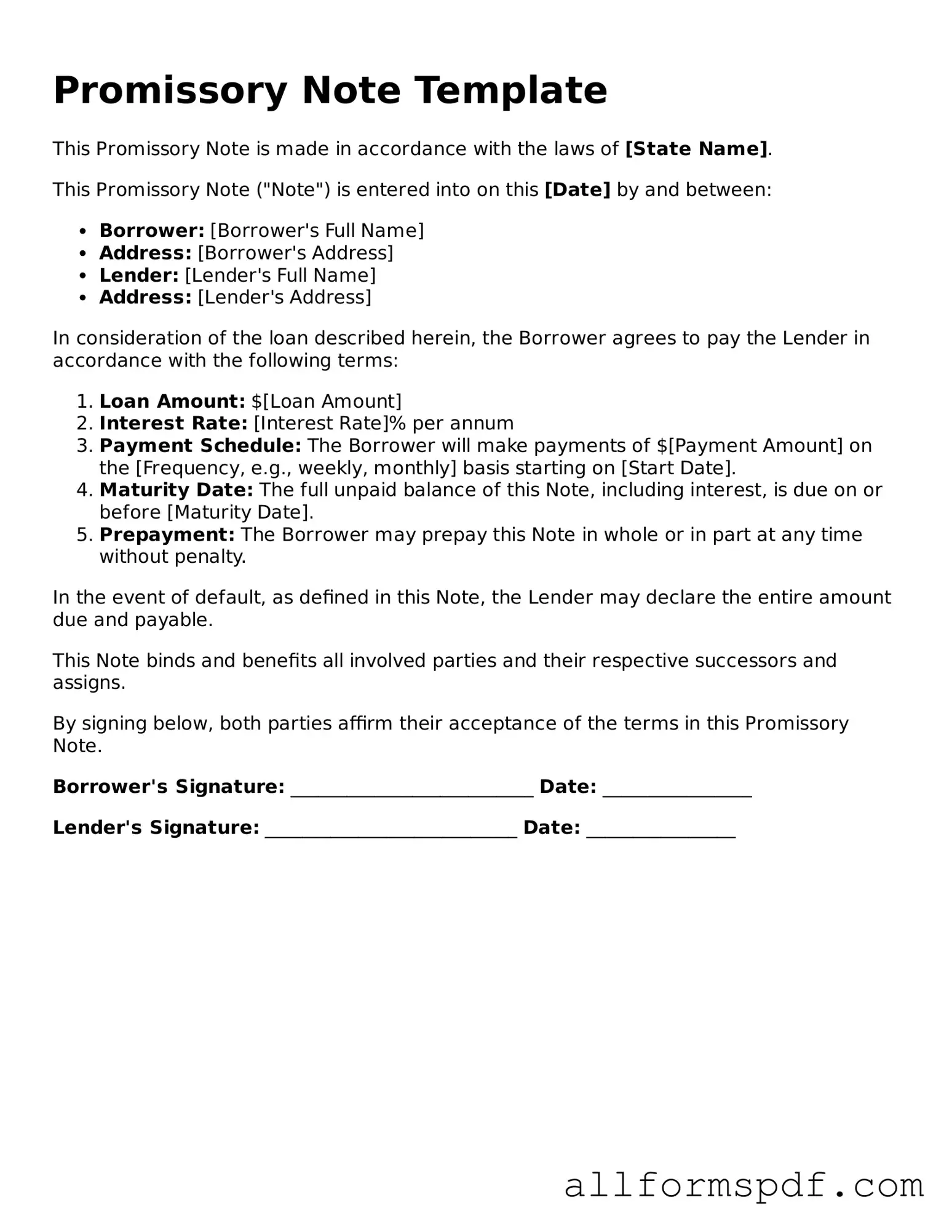Filling out a Promissory Note form can seem straightforward, but many individuals make common mistakes that can lead to complications down the line. One frequent error is failing to include all necessary parties. It is crucial to list both the borrower and the lender clearly. Omitting one party can create confusion and may render the note unenforceable.
Another mistake is neglecting to specify the loan amount. While it may seem obvious, writing down the exact amount in both numerical and written form helps to avoid misunderstandings. If the amounts do not match, it can lead to disputes later on.
People often overlook the importance of detailing the repayment terms. This includes the interest rate, payment schedule, and any late fees. Without clear terms, borrowers may not understand their obligations, which can lead to missed payments and strained relationships.
Additionally, many individuals forget to include a date. A Promissory Note should always have a date of execution. This date establishes when the agreement takes effect and is important for tracking payment schedules.
Another common error is failing to sign the document. A Promissory Note requires signatures from both parties to be legally binding. Without signatures, the document lacks validity, and the agreement may not be enforceable in court.
Some people also make the mistake of not having witnesses or notarization when required. Depending on state laws, having a witness or notarizing the document can add an extra layer of protection and legitimacy to the agreement.
Moreover, individuals sometimes use vague language in the note. Clear and specific language is essential to avoid ambiguity. Phrases that are too broad can lead to different interpretations, which can complicate matters if disputes arise.
Another issue arises when people forget to keep copies of the signed Promissory Note. Both parties should retain a copy for their records. This ensures that everyone has access to the terms agreed upon, which is vital for future reference.
Finally, some individuals fail to review the completed form thoroughly before submission. Taking the time to double-check for errors or omissions can save significant trouble later. A careful review can help ensure that all information is accurate and complete.
